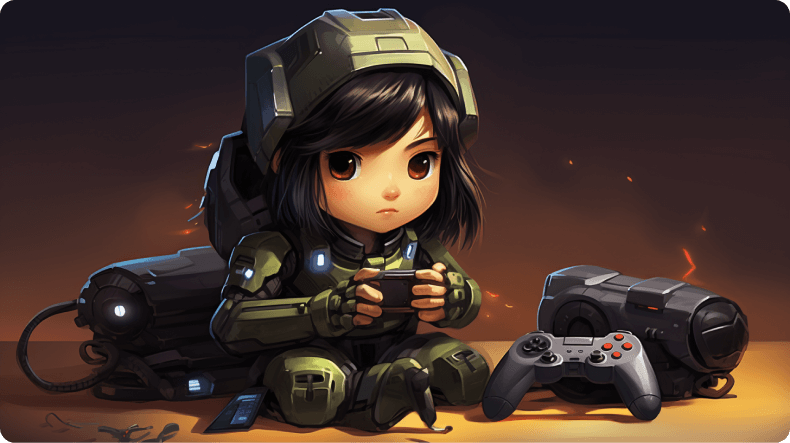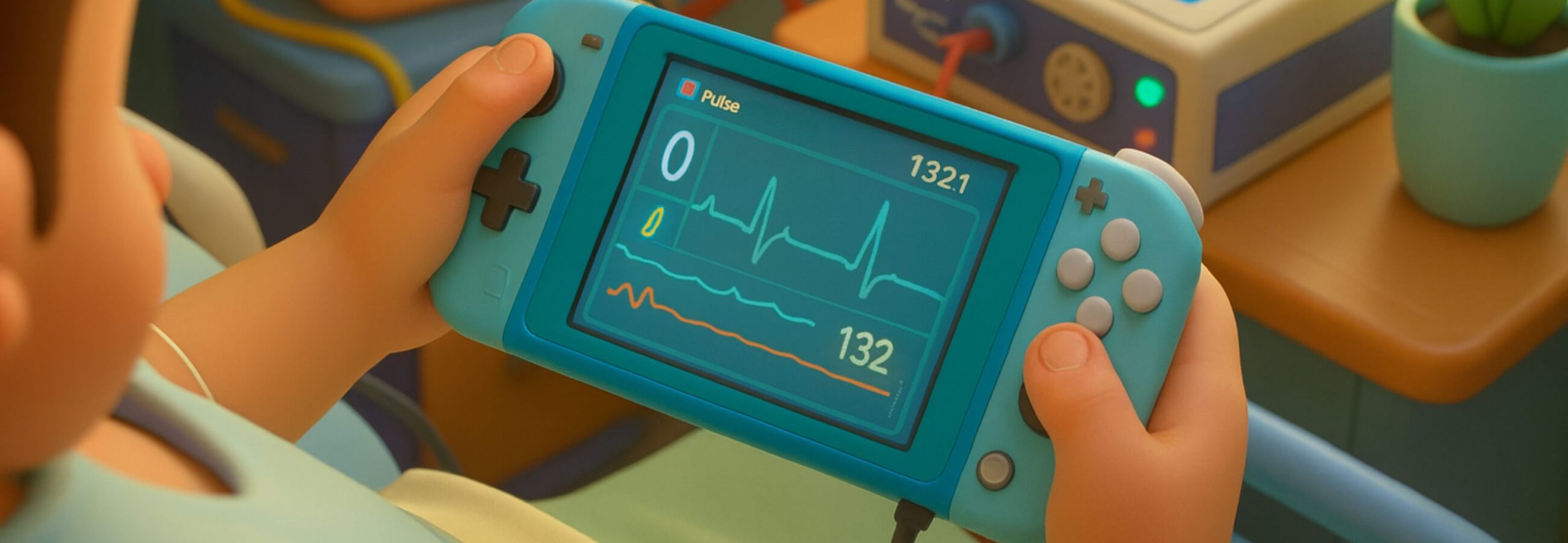

What is the most popular game genre? What will help me with choosing a game genre and mechanics? How different types of game genres and mechanics can affect the gameplay experience?
In this article, we analyzed game mechanics and genres, their connections, and the sequence of constructing a game project from the idea to technical and non-technical components. All stages require analysis and decision-making depending on your goals from start to release. We won’t go into the details of technological development here. Still, this foundation will allow you to build a framework that will influence your product’s future success or failure.

Importance of Genre and Mechanics in Game Production
What is a game genre? Answering this question will show what players expect from a game. Each game genre has a set of components, including narrative, type of graphic assets, their stylization and display, and how the user interacts. From first-person shooters to role-playing games and puzzle adventures, each genre stimulates a specific and preferred response from players.
What is a game mechanic? The core components of interaction in a game are called game mechanics. Players interact with the game world based on specific guidelines that regulate their behavior. The list of features is enormous! Starting from controls, movement, and combat approaches to progression system and resource management – all mechanics in video games differ, and your unique balance of features is a key to a long-life product.
Engagement rises when the mechanics and genres of a video game mesh effectively. For instance, the mechanics of an RTS game force players to think ahead, which aligns with the intellectual features of the genre. Last but not least, retention depends on how genre and mechanics work together.
Game Genres and Their Core Mechanics Analysis
We want to ensure you understand each genre’s unique attributes and player expectations. All video game genres have a set of popular game mechanics that have long been described, structured and have their own technical features. You can choose any of them based on your technical expertise, experience, and market demands.
Sports video games
Video games such as FIFA, NBA 2K, and Rugby allow sports enthusiasts to participate as their favorite teams.

Simulation. Sports games strive for realism by closely imitating real-world sports with precise mechanics, rules, and strategy.
Multiplayer. Multiplayer frequently allows for head-to-head competition, either locally or online.
Action/Adventure video games
Games like Uncharted and Tomb Raider are interactive stories focusing on storytelling and exploration with regular interactions, action, and decision-making.

Combat. From melee to ranged combat is often crucial in action/adventure games and requires precise timing and strategy.
Exploration. Locally or online, head-to-head competition is frequently made possible through multiplayer.
Strategy video game
Games with detailed planning, resource management, and massive battles, like Total War and Civilization, are valued by hundreds of thousands of players because they offer a mental challenge and engaging gameplay.
Resource Management. To win in strategy games, players learn how resource management works and the mechanisms for their creation, accumulation, and practical use. Resources can be natural, financial, or human. Proper management of them helps not only in the game but in life.
Turn-Based or Real-Time. Each strategy game has unique mechanics, such as turn-based games where the pace of the game is not so fast, there is time for thinking and decision making, such as Civilization, or real-time games where the pace is much faster and crisis management skills, quick planning and decision making, such as StarCraft.
Role-Playing Games (RPGs)
From grand open-world adventures like The Witcher to traditional turn-based RPGs like Baldur’s Gate 3, players adore the depth, character customization, and decision-making RPGs offer.
Character Progression. RPGs must be acknowledged for their ability to enable players to level up, customize attributes, and acquire new skills, effectively emphasizing character progression
Narrative Choice. Most RPGs contain branching stories that let players make choices that affect how the game ends.
This selection is not limited only to these video game genres. You can also prepare parameters to combine several game mechanics into a single gaming system.
Choosing the Right Genre for Your Game
When studying different game genres for the upcoming product, you must examine the significant components of maintaining player attention and engagement.

1. Target Audience Preferences. It’s critical to comprehend the tastes of your target audience, including their age, interests, and gaming tendencies. You can improve the likelihood of player engagement by customizing the genres in your game to your target audience.
2. Market Trends. Monitor current developments and examine popular subgenres. Even while developing a unique game is crucial, following trends can draw in more players.
3. Platform Considerations. Different game platforms favor different genres. Mobile gamers, for instance, tend to play lighthearted games like match-3 puzzles, but console gamers prefer more immersive open-world adventures. Ensuring your chosen genre fits the platform’s capabilities and audience expectations is critical.
Fgfactory is available to help creators and businesses realize their ideas for video games. For a smoother and more successful development process, following a game dev checklist can be invaluable. This ensures critical aspects like market research, player interviews, and genre alignment are thoroughly addressed. The right genre ultimately improves the attractiveness and usability of your game. For a better chance of success, conduct market research, interview potential players, and match your vision with the many game genres that best suit your concept and target demographic.
Innovation vs. Awareness in Game Design
Video game development requires a delicate balance between innovation and familiarity to ensure accessibility and engagement.

Unique mechanics can redefine genres, creating unforgettable experiences. Specific gameplay systems must support central ideas to stand out.
On the other hand, players are more likely to be satisfied when playing games with familiar themes, controls, and gameplay elements.
Designers often discover what are game mechanics settings that have the right balance. Playtesting and collecting feedback from players can determine if new mechanics are practical. It is essential to be open to modifying or removing any features that decrease player engagement. Developers can utilize player experiences to identify problematic systems and make necessary changes, making the best gameplay achievable.
When a game is released, regular updates and modifications can significantly support the overall gaming experience, continue growing a fan base, and guarantee the game’s long life.
The Role of Art, Audio, and Narrative in Enhancing Mechanics and Genre
During the game mechanics definition, the creative component is crucial to focus on a specific audience of players, their taste preferences, and past experience.
Genre-Specific Improvements. Matching the art and soundtrack to the genre can significantly enhance a game’s mechanics. For instance, intricate artwork can aid players in strategizing during a strategy game. At the same time, dramatic music can intensify the action of fights. Similarly, colorful graphics and appealing music can complement a fast-paced platformer perfectly.
Creating Atmosphere. Art and music play a crucial role in establishing the mood of a game. For instance, eerie visuals and haunting soundtracks in a horror game heighten mechanics such as stealth and jump scares.
Immersive Storytelling. Excellent game design requires the perfect blend of gameplay and narrative. It is essential to have multiple layers of attention to ensure the player is fully immersed in the game. These two elements make a more immersive gaming experience, allowing players to get more emotionally integrated into the gameplay and storyline.
Game designers who recognize the potential of these components can produce more captivating and memorable games that leave players with lasting impressions.
Non-functional Requirements
The selected game mechanics and engineering setup must also address non-functional issues to achieve an optimal user experience with the game. Optimizing the non-functional aspects of a title should promote product adoption and impact the stability, longevity, and future growth opportunities after release. Here are several points to consider.
1. Usability. Gamer’s journey should be intuitive, simple, and easy to use so that new users can easily get into the game quickly, understand and use all game controls and features.
2. Performance. The game should perform at such a level that it does not block players’ actions in any way. It should not reduce the speed of their interaction with the game and should not worsen their previous user experience. For example, the game settings and visuals should have a minimal impact on the game frame rate.
3. Compatibility. The game should be compatible with all platforms where it is released and performed.
4. QA and Debugging. New features and technology usually lead to new bugs and challenges. Testing and debugging is an integral part of quickly identifying and resolving issues.
5. Maintenance. The game mechanics should be easy to maintain and update over time. All features should be well-documented and follow best practices for coding and QA.
The overall functioning of all the technical, graphical, and non-technical features of any game design mechanics should be the direction to create a comprehensive potion for the best experience for your users.
Your Unique Potion
When designing a game, it’s crucial to choose and define the fundamental parts of the game basis:
1. Choosing a genre that aligns with the game concept and player preferences.
2. Defining game mechanics that are in line with the preferred genre.
3. Building the art direction that helps to improve the immersion.
4. Strengthening the game with a narrative that blends with the game genre and mechanics and enhances the game experience.
Conclusion
When starting a creation process, it is crucial to carefully evaluate and decide on the genre and video game mechanics to build a successful title. These choices create the basis for the product and define gamers’ further engagement and satisfaction. As a result, this affects how successful the game is. Developers may produce a standout gaming experience by expertly fusing narrative with gameplay and leveraging top-notch art and music. Players will be completely immersed in the game environment if these features are intelligently designed, making the experience more fulfilling and fun.

Fgfactory is here to assist game developers and businesses bring their game ideas to life. We are the Australian game development company that can apply the collective expertise and skills of the team that is required to help you turn your ideas to life. Whether you need assistance with software development, artwork, or other help during the game production cycle, we are here to support you at any stage. So, let’s start turning your dream game into a reality.
Let’s get started!
SUMMARIZE THIS PAGE
Contact us






